11 Types of Black Birds in Utah (With Pictures)
Last Updated on
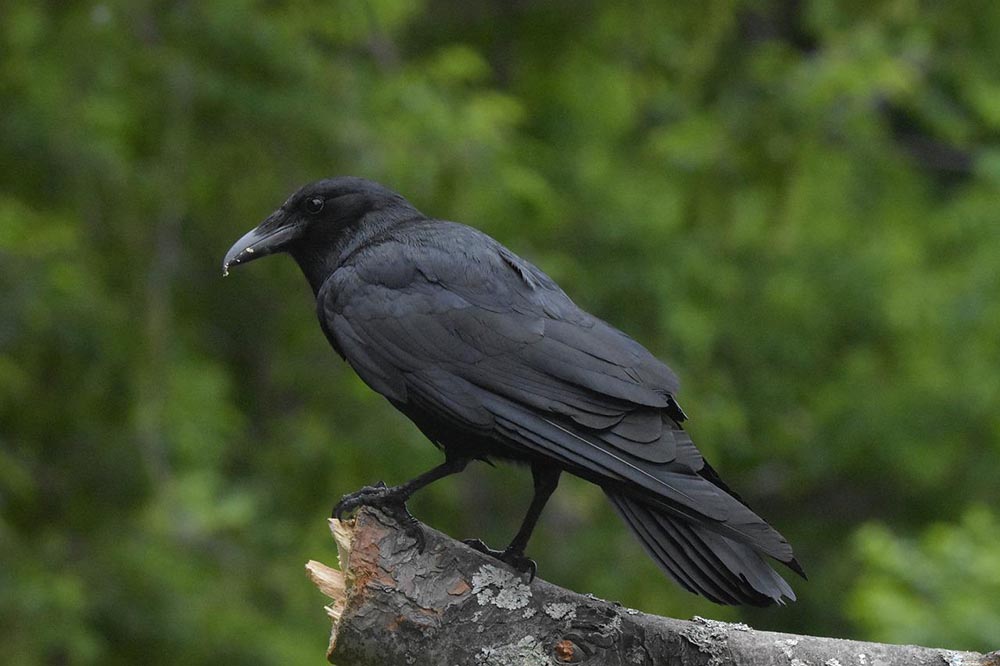
Covered in alpine forests, red rock canyons, and salt flats, Utah has a diverse environment for blackbirds to thrive. Although many areas are dry and lack vegetation, they still have populations of birds that allow for the ecosystem to run smoothly. Today we’ll be covering 11 types of blackbirds in this state, in addition to their habitat range, behaviors, and physical traits. Keep reading to learn more!

The 11 Types of Black Birds in Utah
1. Brewer’s Blackbird
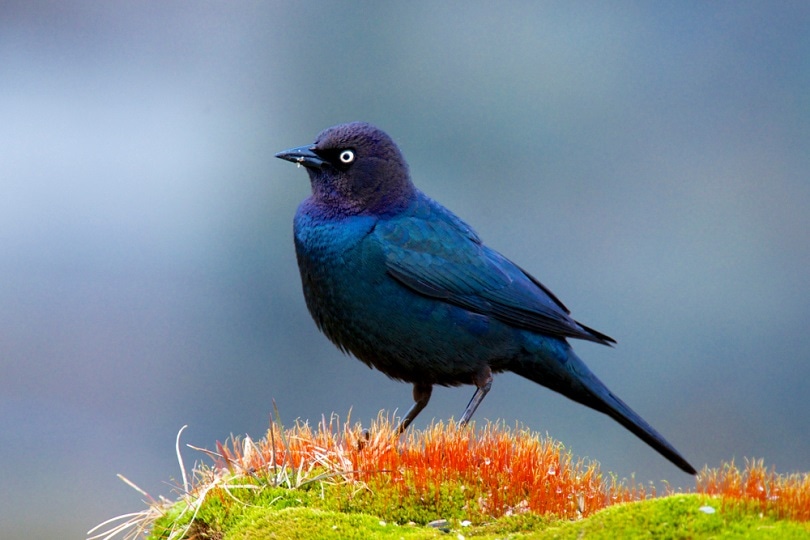
| Scientific name: | Euphagus cyanocephalus |
| Family: | Icteridae |
| Endangerment: | Unstable |
Found throughout all areas of Utah, Brewer’s blackbird is a year-round resident. Male blackbirds of this species have entirely black plumage with subtle green and blue hues, whereas females have brown coloring. Due to their similarities with many other urban birds, they tend to stick around parks and townships to scavenge for food. Nesting in trees and shrubs, Brewer’s blackbirds are natural ground foragers and love to scout out seeds for food. They generally move in groups, which can be seen on tree tops and powerlines.
2. Common Grackle
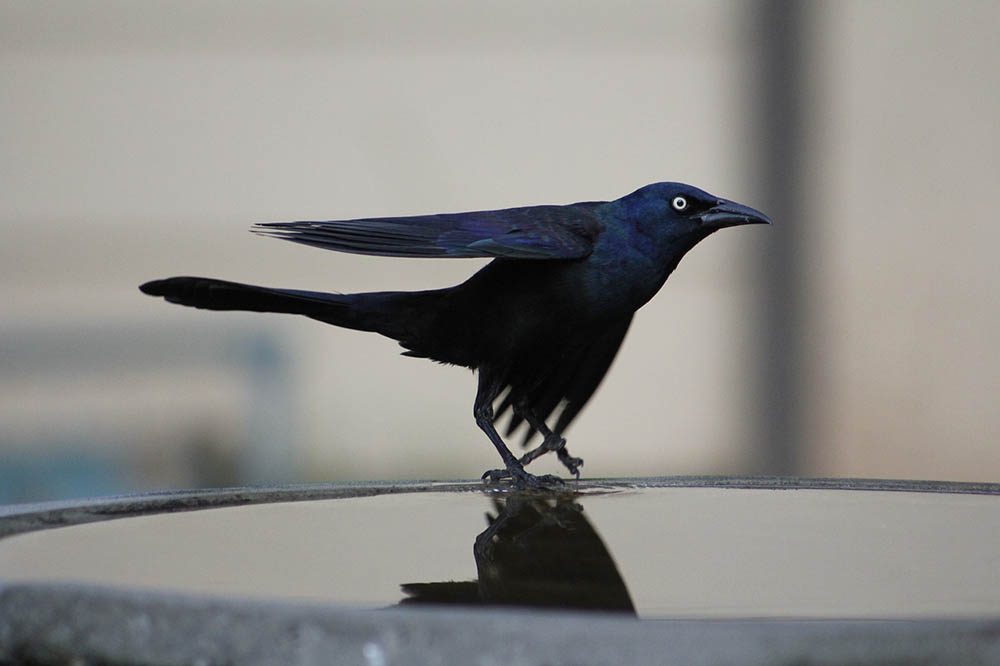
| Scientific name: | Quiscalus quiscula |
| Family: | Icteridae |
| Endangerment: | Unstable |
The common grackle is a well-known member of the blackbird family, as they are found in any woodland area with decent exposure. They have an elongated body type and females have a more consistent black coating. Their omnivorous diet consists of meat, vegetation, and seeds, but they also scavenge for scraps that humans have left behind. In Utah, this species only has a strong presence in the northeast corner, as they live here during breeding periods.
3. American Crow

| Scientific name: | Corvus brachyrhynchos |
| Family: | Corvidae |
| Endangerment: | Stable |
One of the most common birds in the United States, the American crow is found in nearly every environment you can think of, whether on backroads or in populated areas. They’re well-known scavengers that have quite intelligent survival tactics. It’s often that these all-black birds will only stay in Utah during the colder months since the climate isn’t too rough. However, they may live year-round in northern and eastern regions.
4. Red-winged Blackbird
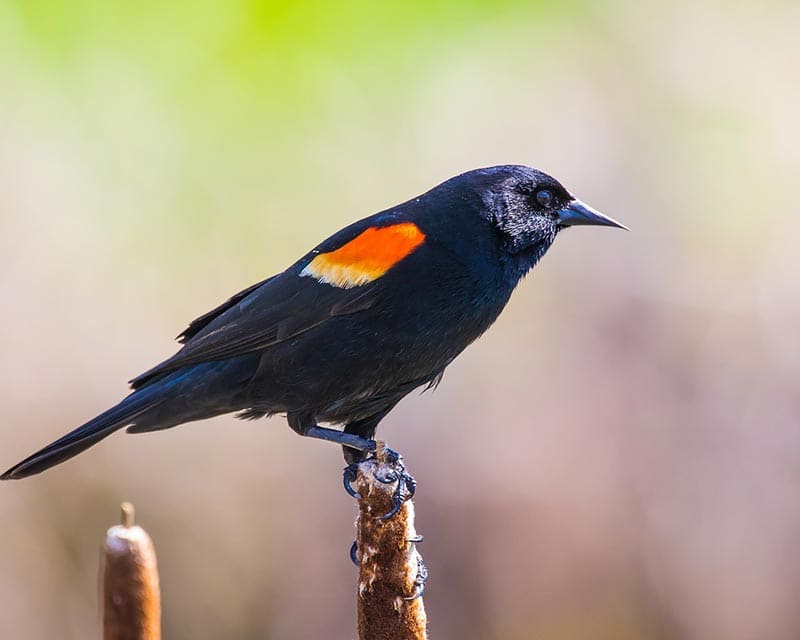
| Scientific name: | Agelaius phoeniceus |
| Family: | Icteridae |
| Endangerment: | Stable |
The striking red accent on the feathers of male red-winged blackbirds is hard to miss, even during darker hours. It’s not unusual to hear this species singing about on telephone wires and wetland shrubs as the spring thaw comes into effect. Found everywhere in the Beehive State, red-winged blackbirds search the ground for insects and bugs to satisfy their protein-rich diet. However, they will surely fly over to a feeder if provided with black oil sunflower seeds or grain.
5. European Starling
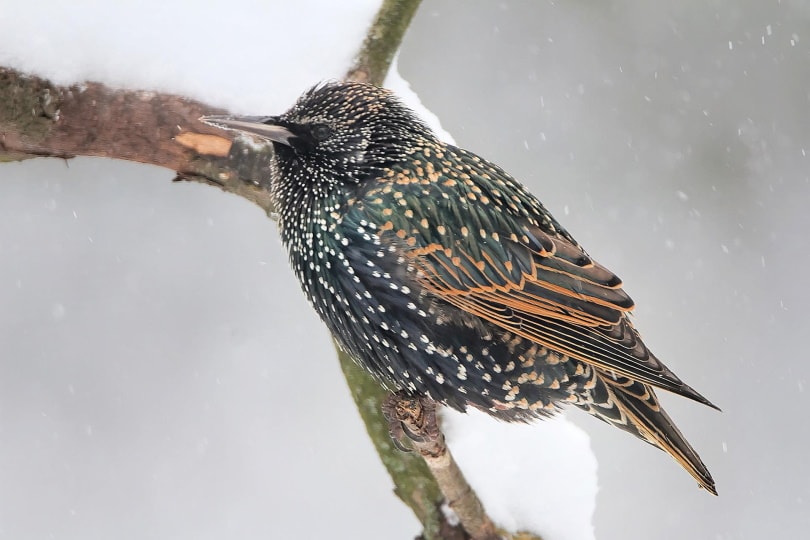
| Scientific name: | Sturnus vulgaris |
| Family: | Sturnidae |
| Endangerment: | Stable |
An abundant bird found in most American towns and cities, the European starling has a mix of black, green, purple, and brown feathers across its body. The easiest way to identify a male from a female is to look for the male’s yellow beak. Starlings generally feed on bugs and insects while foraging park grounds and streets. They can be a nuisance to other birds due to their territorial behavior, which is why you may see them closing in on other bird species’ habitats. European starlings are found in the state during all seasons.
6. Yellow-headed Blackbird
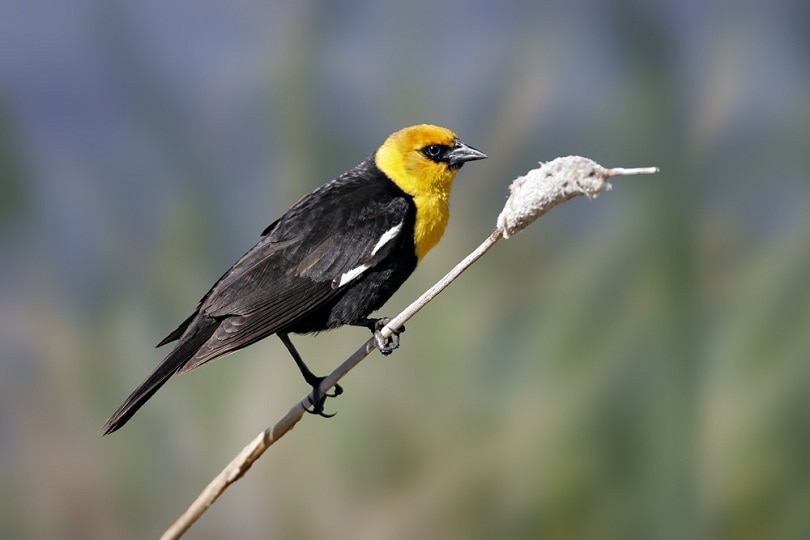
| Scientific name: | Xanthocephalus xanthocephalus |
| Family: | Icteridae |
| Endangerment: | Stable |
Yellow-headed blackbirds look exactly as they sound – their heads and necks are covered in bright yellow, with the rest of their body being spread with sleek black feathers. However, females do have much less yellow prominence, as it’s replaced with darker colors. This species is found in Utah during mating season, as they migrate down to the tropics of Mexico for winter warmth. Look for this bird in marshes and wetland areas with lots of tall grass and cattails, you won’t miss their bright yellow color!
7. Common Raven
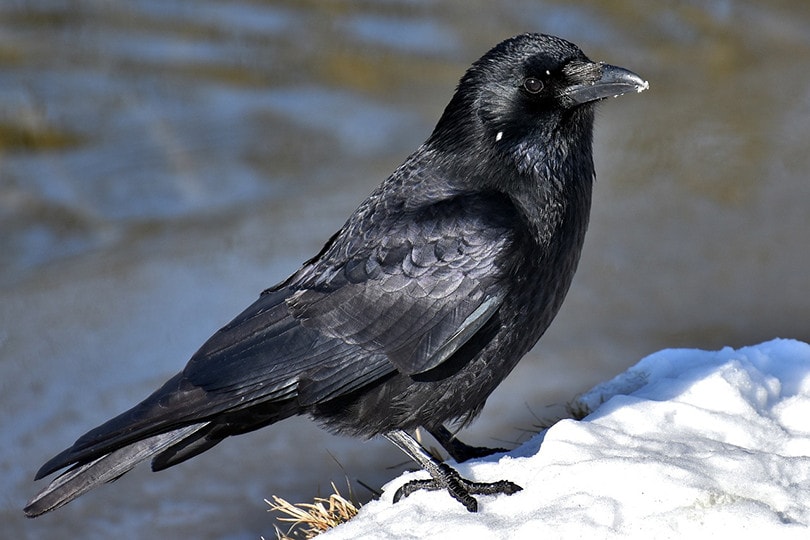
| Scientific name: | Corvus corax |
| Family: | Corvidae |
| Endangerment: | Stable |
A large bird of the Corvidae family, the common raven is known for its human-like croaks and screeches as they hover around the sky looking for dead animal carcasses. Throughout the state, ravens stick to cliff sides of canyons and forest rock faces; preying on desert rodents or camper leftovers. However, they do live in urbanized regions if they please. Ravens are easy to spot because of how large they are, and they frequently visit roadsides and wildlife parks where food is plentiful.
8. Bullock’s Oriole

| Scientific name: | Icterus bullockii |
| Family: | Icteridae |
| Endangerment: | Stable |
Another yellow bird mixed with black is the Bullock’s oriole. This species of oriole may have the same amount of black as the others on this list, but their yellowish-orange bodies make them a straightforward bird to identify. You may notice a flare of white and gray feathers on their wings as well. The Bullock’s oriole lives in Utah during mating season in every corner of the state, but it’s best to look for them in open woodlands where their colors stand out. Unfortunately, they aren’t fond of feeders and are best found on the trail.
9. Brown-headed Cowbird
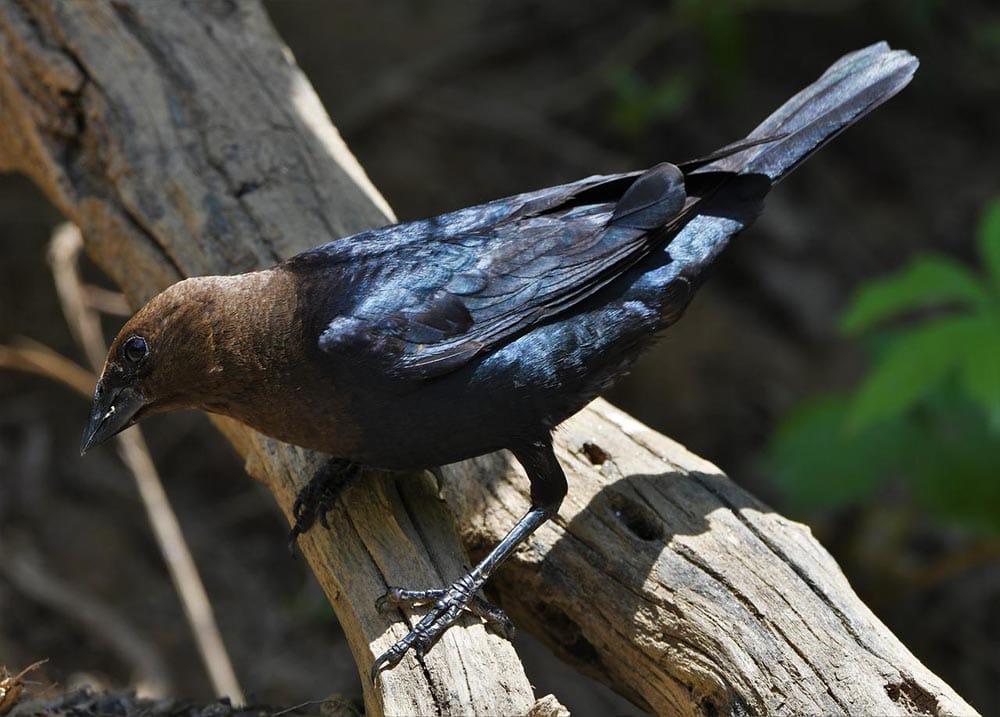
| Scientific name: | Molothrus ater |
| Family: | Icteridae |
| Endangerment: | Stable |
As the name suggests, brown-headed cowbirds are brown on top but have black bodies and black wings for contrast. Their diet consists of seeds and grains, so they tend to live near crop fields and farms for a consistent meal. Female cowbirds are much less colorful and have a brownish gray color throughout their entire body. They can be attracted to backyards with seeds, but be aware that their behavior is not the best when around smaller birds.
10. Scott’s Oriole

| Scientific name: | Icterus parisorum |
| Family: | Icteridae |
| Endangerment: | Stable |
Another yellow and black bird, the Scott’s oriole may be mistaken for the Bullock’s oriole, due to their similar colors. However, it’s easy to differentiate them by examining their color patterns – male Scott’s orioles have a black head, whereas the Bullock’s oriole has yellow around this area. Do keep in mind that the female Scott’s oriole does have a yellow plumage all-around, but the hue is much less saturated. This desert-dwelling species lives in almost every arid region of Utah, with the exception of some eastern sections. Look for dry, open woodlands or desert habitats with scattered trees. The color will be hard to miss!
11. Great-tailed Grackle

| Scientific name: | Quiscalus mexicanus |
| Family: | Icteridae |
| Endangerment: | Stable |
In the southern and eastern regions of Utah, the great-tailed grackle will be an inevitable sight in areas with low-lying vegetation. A male great-tailed grackle looks similar to the common grackle, but their bodies are far more slender, which is in part due to their long, extending tails. They can be found in most towns lurking on lawns or in crop fields atop fences. The female grackle of this species has a mostly brown color and dark eyes.

Final Thoughts
Blackbirds are everywhere in the U.S, and Utah has a decent number of these species to call home. Some are easier than others to bring to the feeder, while some require steps onto the trail. Either way, we hope you learned a bit about the birding opportunities that can be found in this canyon-covered state. It’s not a bad idea to bring binoculars or scopes to get a closer look as well!
Featured Image Credit: JackBulmer, Pixabay
About the Author Robert Sparks
Robert’s obsession with all things optical started early in life, when his optician father would bring home prototypes for Robert to play with. Nowadays, Robert is dedicated to helping others find the right optics for their needs. His hobbies include astronomy, astrophysics, and model building. Originally from Newark, NJ, he resides in Santa Fe, New Mexico, where the nighttime skies are filled with glittering stars.
Related Articles:
Monocular vs Telescope: Differences Explained (With Pictures)
10 Types of Hummingbirds in Arkansas (With Pictures)
8 Types of Hummingbirds in Nebraska (With Pictures)
5 Types of Hummingbirds in Idaho (With Pictures)
3 Types of Hummingbirds in Mississippi (With Pictures)
8 Types of Hummingbirds in Kansas (With Pictures)
5 Types of Hummingbirds in West Virginia (With Pictures)
5 Types of Hummingbirds in Ohio (With Pictures)
